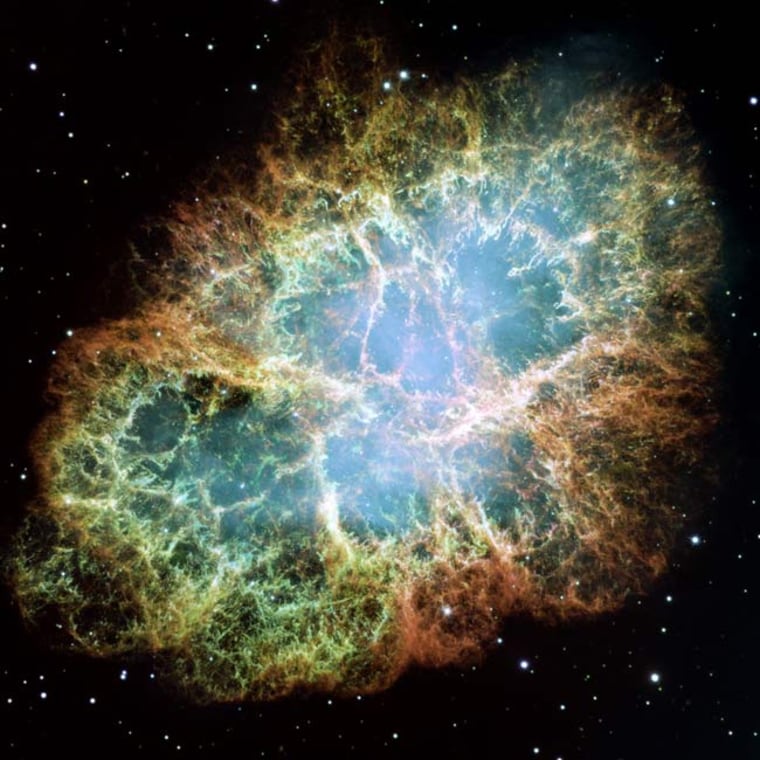The glowing Crab Nebula, a spectacular and colorful object famously imaged by the Hubble Space Telescope, represents the leftovers from a supernova explosion observed by Chinese and Arab astronomers in 1054 C.E. The star that exploded is still there, but now in the form of a dense, spinning pulsar that emits lighthouse beams of radiation.
Now scientists have discovered high-energy gamma rays near the pulsar that oscillate in alignment with the star's spin. The finding may shed light on the intense environment deep inside the Crab Nebula.
When it died, the star that created the Crab Nebula had run out of fuel to power nuclear reactions, so it collapsed under its own gravity into the condensed form of a neutron star (these are made only of neutrons — no protons or electrons). The explosion pushed out the star's outer layers to form the gassy nebula visible to telescopes today. The neutron star is called a pulsar because of the pulses of light we see when it spins, and it's encircled by a swirling web of speeding particles and electromagnetic fields.
"Mainly, we are trying to understand the magnetic fields around the pulsar and the emission mechanisms that are making the pulsars pulse," said researcher David J. Clark, an astrophysicist at the University of Southampton in the U.K. "The gamma rays we found are being produced by this cloud of high speed particles circling around the pulsar."
The researchers, led by Anthony Dean of the University of Southampton, found that the gamma rays are polarized, meaning their electric fields move up and down in one direction, which happens to be in the same direction as the axis of the pulsar's spin. This tells the scientists that the light is produced close to the pulsar.
The study, funded by the Italian Space Agency and the U.K.'s Science and Technology Funding Council, is detailed in the Aug. 29 issue of the journal Science.
The discovery is "yielding insights into the processes and mechanisms involved in making a dead star so active," wrote Annalisa Celotti in a commentary article in the same issue of Science. She is an astrophysicist at the International School for Advanced Studies in Italy, who was not involved in the research. "The high degree and direction of polarization at high energies reported by Dean et al.provide valuable information on the site of acceleration of the particles and on the structure of the magnetic field associated with the pulsar."
Learning more about the Crab Nebula system helps scientist unravel the complicated workings of pulsars in general. The Crab, located about 6,500 light-years from Earth in the constellation Taurus, is the brightest pulsar around, so it's the easiest to study.
"This is the brightest object in the gamma ray sky, the one we have the most data for," Clark told SPACE.com. "The important thing we were trying to do in the first place is actually measure polarization, because people haven't been able to measure polarization to a good degree of accuracy before."
The recent measurements came thanks to the European Space Agency's International Gamma-Ray Astrophysics Laboratory satellite, which observes the gamma-ray sky.
